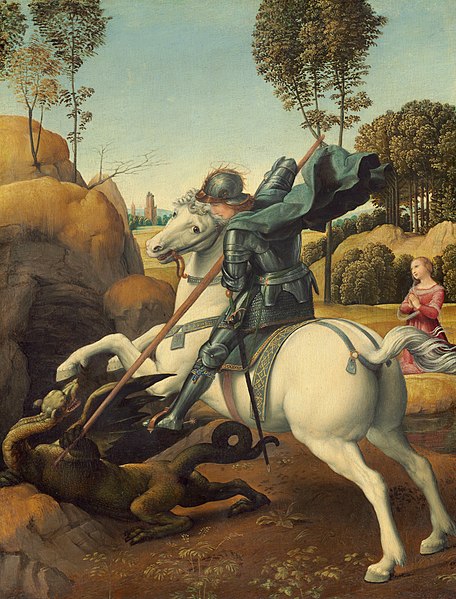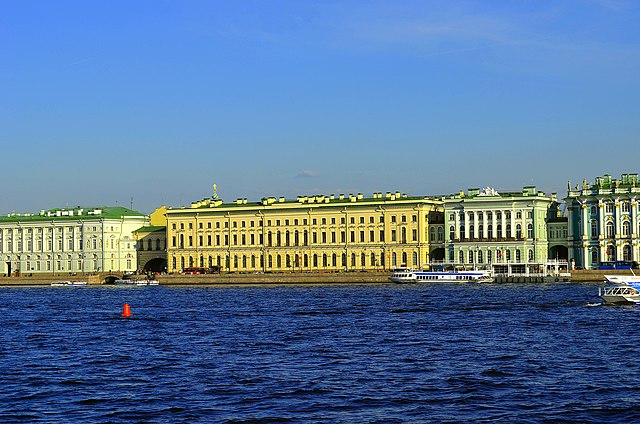Soviet sale of Hermitage paintings
The Soviet sale of Hermitage paintings in 1930 and 1931 resulted in the departure of some of the most valuable paintings from the collection of the State Hermitage Museum in Leningrad to Western museums. Several of the paintings had been in the Hermitage Collection since its creation by Empress Catherine the Great. About 250 paintings were sold, including masterpieces by Jan van Eyck, Titian, Rembrandt, Rubens, Raphael, and other important artists. Andrew Mellon donated the twenty-one paintings he purchased from the Hermitage to the United States government in 1937, which became the nucleus of the National Gallery of Art in Washington, D.C.
The Alba Madonna by Raphael, was bought for the Hermitage by Emperor Nicholas I of Russia in 1836. It was sold to Andrew Mellon by the Soviet Government in 1931 for $1,166,400, the largest sum ever paid for a painting until that time.
The Annunciation by Jan van Eyck (1434) was purchased for the Hermitage by Emperor Nicholas I of Russia in 1850. It was sold to Andrew Mellon in June 1930 for $502,899.
Mezzettino by Antoine Watteau, was purchased for the Hermitage by Catherine the Great in 1767. It was sold in May 1930 to Calouste Gulbenkian, who sold it in 1934 to the Metropolitan Museum in New York.
Saint George and the Dragon, by Raphael, was purchased for the Hermitage by Catherine the Great in 1772, and later hung in the gallery of portraits of the generals who had defeated Napoleon. It was sold to Andrew Mellon in 1931.
The State Hermitage Museum is a museum of art and culture in Saint Petersburg, Russia. It was founded in 1764 when Empress Catherine the Great acquired a collection of paintings from the Berlin merchant Johann Ernst Gotzkowsky. The museum celebrates the anniversary of its founding each year on 7 December, Saint Catherine's Day. It has been open to the public since 1852. The Art Newspaper ranked the museum 10th in their list of the most visited art museums, with 2,812,913 visitors in 2022.
View of (from left) the Hermitage Theatre, Old Hermitage, and Small Hermitage
The Hermitage Museum complex. From left to right: Hermitage Theatre – Old Hermitage – Small Hermitage – Winter Palace (the "New Hermitage" is situated behind the Old Hermitage)
Egyptian Hall
The Pavilion Hall








